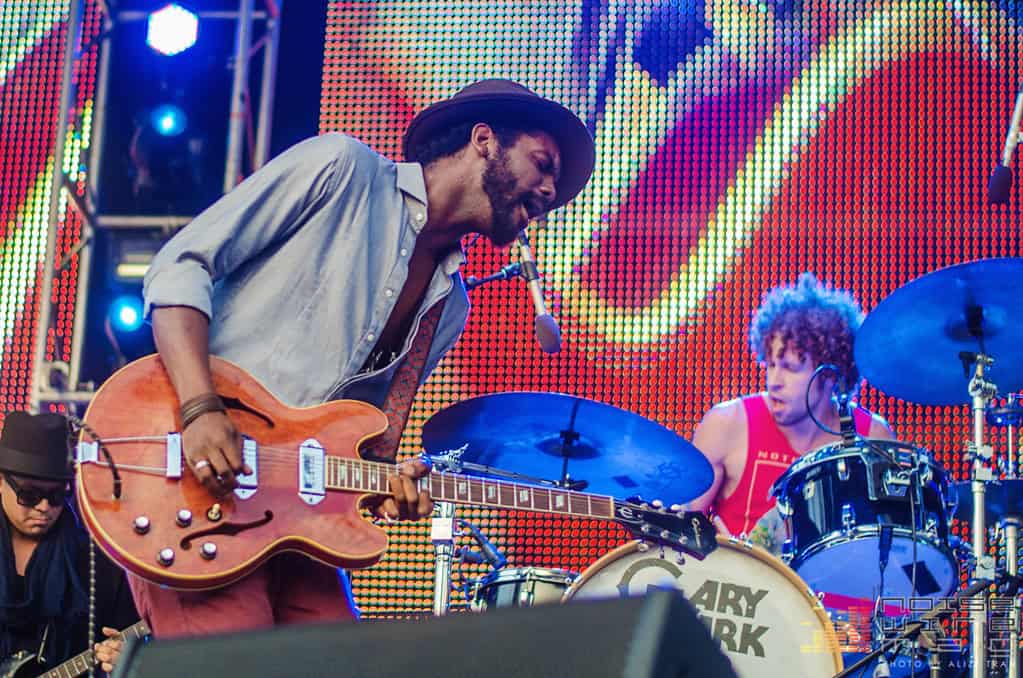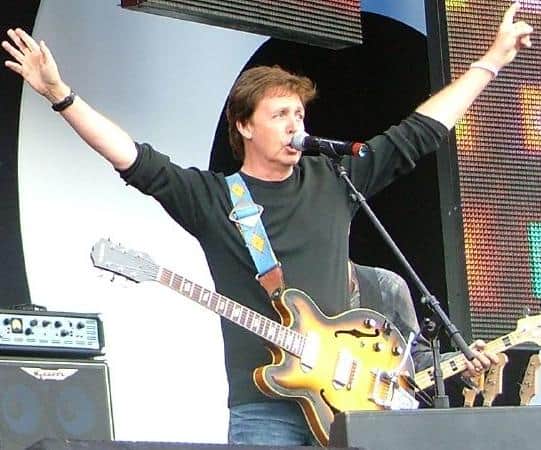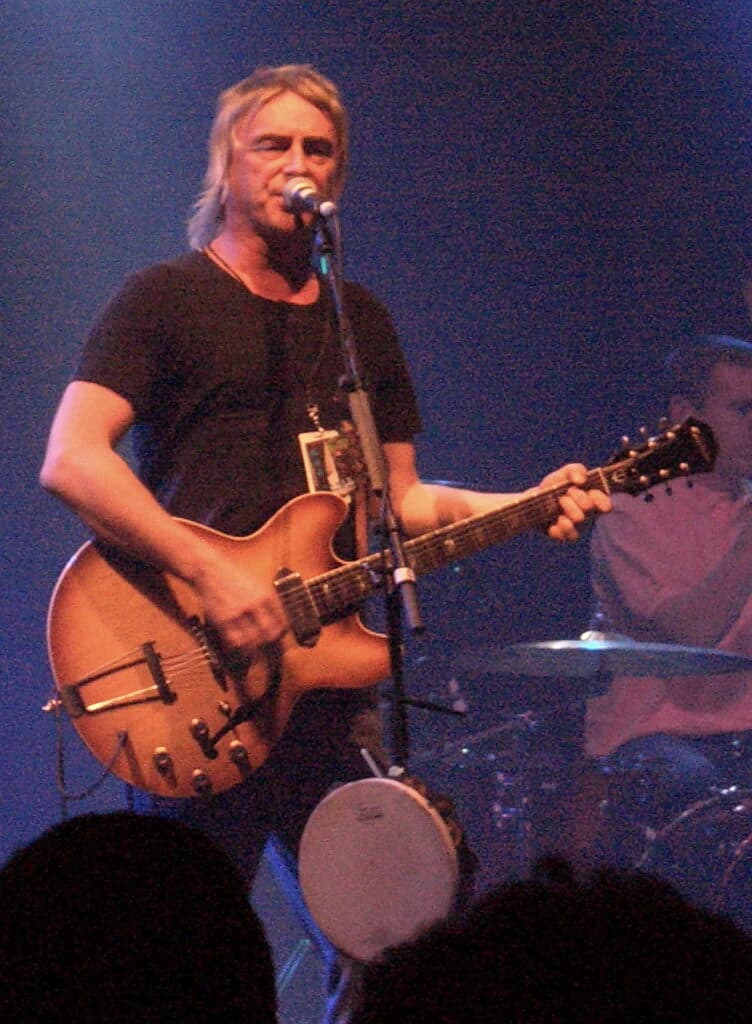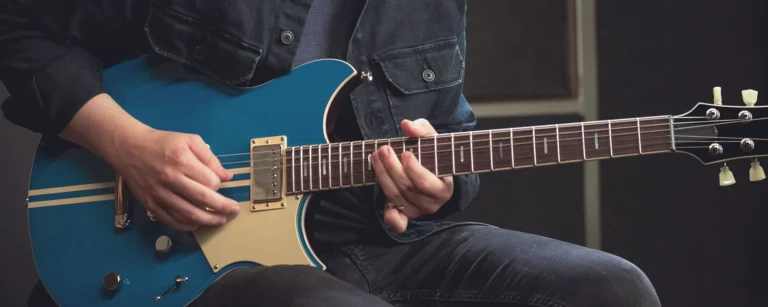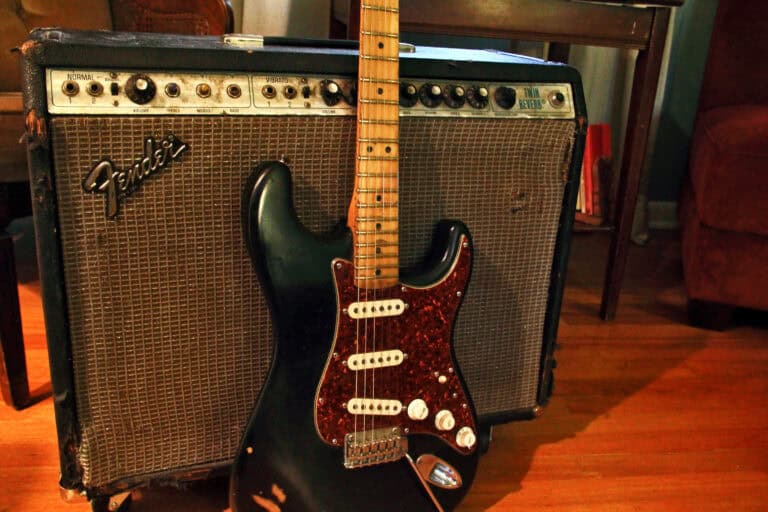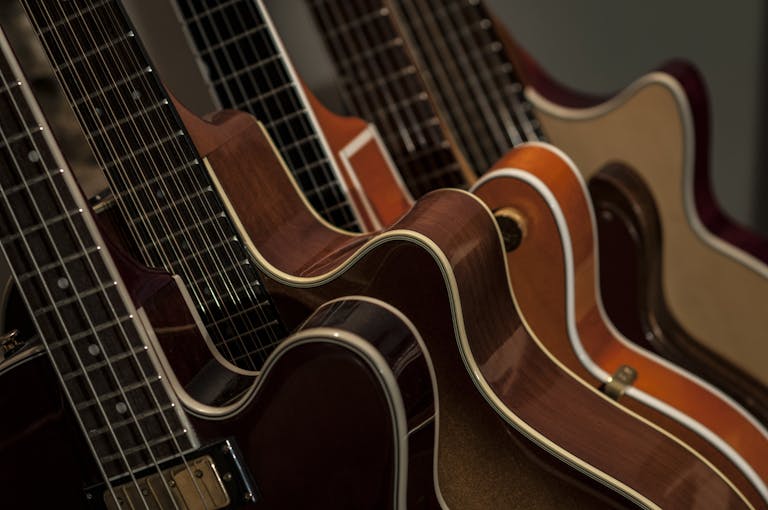The Epiphone Casino: A Hollow-Body Icon with a Legendary Legacy
Few guitars have left a mark on music history quite like the Epiphone Casino. Known for its rich, resonant tone and lightweight, fully hollow-body construction, the Casino has become an icon among electric guitars. While it shares some design similarities with the Gibson ES-335, the Casino stands apart in both tone and feel, carving out a unique place in rock and roll history. Perhaps most famously, it became an essential part of The Beatles’ sound, appearing on some of their most iconic recordings. Beyond The Beatles, the Casino has been played by some of the most influential guitarists in history, leaving its unmistakable sonic fingerprint across countless legendary songs.
The History of the Epiphone Casino
The Epiphone Casino was introduced in 1961 during Gibson’s ownership of the Epiphone brand. At the time, Epiphone served as Gibson’s alternative line, often producing guitars that were similar to Gibson models but with their own unique design elements. The Casino was based on Gibson’s ES-330, but it quickly developed a reputation of its own, thanks to its fully hollow-body construction and a pair of P-90 pickups that delivered a raw, articulate tone.
Unlike semi-hollow guitars, which feature a center block to reduce feedback, the Casino’s completely hollow body gave it a naturally resonant and airy sound. This made it perfect for blues, rock, and even jazz, allowing players to achieve a warm and responsive tone that was both dynamic and lively. The Casino’s design also made it significantly lighter than many other electric guitars, offering excellent playability and comfort for long performances.
How the Casino Differs from the Gibson ES-335
At first glance, the Epiphone Casino and the Gibson ES-335 appear to share many similarities. Both guitars feature a double-cutaway design, a similar body shape, and dual pickups. However, there are key differences that set them apart in both sound and construction.
One of the most significant differences is the Casino’s fully hollow body compared to the ES-335’s semi-hollow construction. The ES-335 has a solid center block running through the body, which helps reduce feedback and adds sustain. This gives the ES-335 a thicker, more controlled sound, ideal for high-gain applications and sustained lead playing. The Casino, on the other hand, has no center block, making it more acoustically resonant but also more prone to feedback at high volumes. This characteristic gives the Casino a more open, dynamic feel that responds well to touch and playing dynamics.
Another key difference lies in the pickups. The Casino is equipped with two P-90 single-coil pickups, known for their bright, snappy attack and midrange punch. P-90s offer a grittier and more articulate tone compared to the humbuckers commonly found in ES-335 models, making the Casino a perfect choice for players looking for vintage warmth with a bit of edge.
The Beatles and the Epiphone Casino
The Epiphone Casino is perhaps best known for its association with The Beatles. In the mid-1960s, both John Lennon and George Harrison acquired Casinos, with Paul McCartney later picking one up as well. This move was partially influenced by their desire to experiment with new sounds as they moved away from their early pop roots and into more sophisticated, studio-driven compositions.
John Lennon’s Casino became one of his most beloved guitars. He used it extensively from the Rubber Soul era through Let It Be, often playing it in the studio and on stage. Lennon even stripped the sunburst finish off his Casino, leaving it in a natural wood color, a look that would become one of his trademarks.
George Harrison also used his Casino for some of The Beatles’ most famous recordings. Notably, his Casino can be heard on Revolver. Paul McCartney, despite being a bassist, frequently used his Casino when playing guitar, such as on “Paperback Writer.” The Casino’s bright, punchy tone became a defining part of The Beatles’ later recordings, helping shape the sound of rock and roll in the process.
Notable Players and Iconic Songs
While The Beatles played a significant role in cementing the Casino’s place in history, they were far from the only artists to use it. Many legendary guitarists have favored the Casino for its unique sound and playability.
- Keith Richards (The Rolling Stones): In the early days of The Rolling Stones, Keith Richards used an Epiphone Casino before transitioning to other guitars. His Casino can be heard on some of the band’s earliest recordings.
- Gary Clark Jr.: The modern blues virtuoso has often used a Casino, particularly for its raw, biting P-90 tone that complements his expressive playing style.
- Paul Weller (The Jam, The Style Council): Weller has long been associated with the Casino, using it throughout his career to achieve a punchy, articulate sound.
- Noel Gallagher (Oasis): Gallagher has been frequently seen playing a Casino, particularly during Oasis’s peak years in the 1990s.
Many iconic songs have featured the unmistakable sound of the Epiphone Casino. Some of the most famous include:
- “Taxman” – The Beatles: Featuring George Harrison’s biting Casino tone, this song set the stage for The Beatles’ more experimental rock sound.
- “Take Me Out” – Franz Ferdinand: The sharp, rhythmic guitar work in this song is enhanced by the Casino’s bright, articulate tone, helping to define its punchy and infectious groove.
- “The Pretender” – Foo Fighters: Dave Grohl has been known to use an Epiphone Casino in the studio, and its raw, open tone contributes to the dynamic shifts and energy that define this modern rock anthem.
- “Don’t Look Back in Anger” – Oasis: Noel Gallagher used his Casino extensively throughout Oasis’s catalog, helping shape their Britpop sound.
The Lasting Appeal of the Epiphone Casino
More than six decades after its introduction, the Epiphone Casino remains one of the most beloved hollow-body electric guitars in history. Its lightweight, fully hollow construction, paired with its powerful P-90 pickups, continues to attract guitarists looking for a vintage-inspired instrument with character and depth. While it may not have the sustain and feedback resistance of a Gibson ES-335, its unique tonal qualities make it an irreplaceable part of rock and roll history.
From The Beatles to modern players like Gary Clark Jr., the Casino has maintained its reputation as a versatile, expressive, and inspiring guitar. Its bright, responsive tone and rich legacy ensure that it will continue to be a favorite among musicians for generations to come. Whether played clean for shimmering chords or pushed into overdrive for raw, aggressive leads, the Epiphone Casino remains a true classic in the world of electric guitars.
